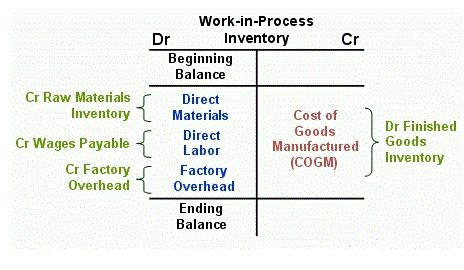
Assume an investment that generated an ROI of 50% over five years. The simple annual average ROI of 10% was obtained by dividing ROI by the holding period of five years. It’s only a rough approximation of annualized ROI because it ignores the effects of compounding that can make a significant difference over time. The asset’s current value and total profits remain the same in both cases. What changes is the ROI, because you committed less personal capital in the leveraged scenario.
How Leverage Impacts ROI
Shorter periods may not capture long-term potential, while longer periods may dilute short-term fluctuations. Aligning the time frame with reporting periods is essential for informed https://www.bookstime.com/articles/what-is-a-corporate-purchasing-card decisions. The cost of investment includes all expenses required to initiate and sustain the investment, such as purchase and maintenance costs. For example, if additional costs are $2,000, bringing the total investment to $12,000, the ROI calculation adjusts accordingly.
ROA Formula / Return on Assets Calculation

However, the first investment is completed in three years, while the second investment needs five years to produce the same yield. The same ROI for both investments blurred the bigger picture, but when the factor of time was added, the investor easily saw the better option. The formula to calculate IRR is way more complex than that of ROI. The magnifying effect is even felt more in the case of a loss due to the need to pay back both the loan and interest on it. In this case, the ROI with 50% financial leverage of -35.5% is much worse than an ROI of -17.25% with no financial leverage. To calculate the investment gain, you have to use the following steps.
- Other metrics, such as NPV, address this limitation by discounting future cash flows.
- Note that it is very important to consider the scale of a business and the operations performed when comparing two different firms using ROA.
- But accounting rate of return (ARR) method uses expected net operating income to be generated by the investment proposal rather than focusing on cash flows to evaluate an investment proposal.
- However, for initial assessments and straightforward projects, ROI remains a valuable tool.
- While ROI offers a quick snapshot, it’s important to acknowledge its limitations.
- For instance, a company may decide to recycle water in its factories and replace its lighting with all LED bulbs.
How to Calculate the Return on Investment
For investments involving periods lower than a year, the relative fraction value can be used. For one year and 6 months, a value of 1.5 can be used in place of “n”. The implications are also easy to infer from the final results of calculating it.
ROI is used to justify technology investments, such as software purchases. It helps determine whether the investment will result in cost savings or increased productivity. It treats returns received today the same as returns received in the future.
How to Calculate ARR (Accounting Rate of Return)

The internal rate of return (IRR) is the rate of growth that an investment is expected to generate annually. It is an ideal formula for measuring an investment with a long period and is used to compare the what is return on investment potential rate of return from an investment over time. The cost of investment includes all expected and additional costs like, for instance, maintenance costs, property taxes, sales fees, stamp duties, and legal costs.
- Unlike the return on investment (ROI) that computes for a percentage or rate, the residual income (RI) computes for an absolute dollar value.
- Divide the investment or business division’s profit share by the respective investment and multiply the result by 100.
- Return on investment (ROI) is the ratio of profit made in a financial year as a percentage of an investment.
- Suppose Jo also invested $2,000 in Big-Sale Stores Inc. in 2014 and sold the shares for a total of $2,800 in 2017.
Identifying Costs and Gains for Accurate ROI Calculation

We can compare Keith’s good choice of liquid metals with his other financial choice of investing in a medical equipment company. He purchased 1,000 shares at $1 per share and sold them for $1.25 per share. Below is a break down of subject weightings in the FMVA® financial analyst program. As you https://quitsingle.com/a/724.html can see there is a heavy focus on financial modeling, finance, Excel, business valuation, budgeting/forecasting, PowerPoint presentations, accounting and business strategy.

For mutual fund investments, compare the ROI to your investment goals and the portfolio performance of other investment funds. Note that you also need to subtract the investment cost from the numerator of the basic ROI formula. Department C has a return on investment (ROI) of 28.6% ($300 million/$1,050 million) while department P has return on investment (ROI) of 18.6% ($130 million/$700 million).

- In other words, ROI reveals the overall benefit (return) of an investment using the gain or loss from the investment along with the cost of the investment.
- It doesn’t consider ancillary benefits such as social or environmental costs.
- ROI can be periodically calculated to determine how the project is performing.
- Return on investment, or ROI, is a straightforward measurement of the bottom line.
Companies with a steady or improving return on capital are unlikely to put significant amounts of new capital to work. Investors and analysts might also use the return on new invested capital (RONIC) calculation to determine the value of deploying new or additional capital to a new or existing project. ROE tells you how effectively a company is using shareholder money to generate profits. ROA measures how much profit the company squeezes out of every dollar of its assets. They’re powerful for analyzing big corporations but aren’t really built for sizing up your personal investment portfolio.
